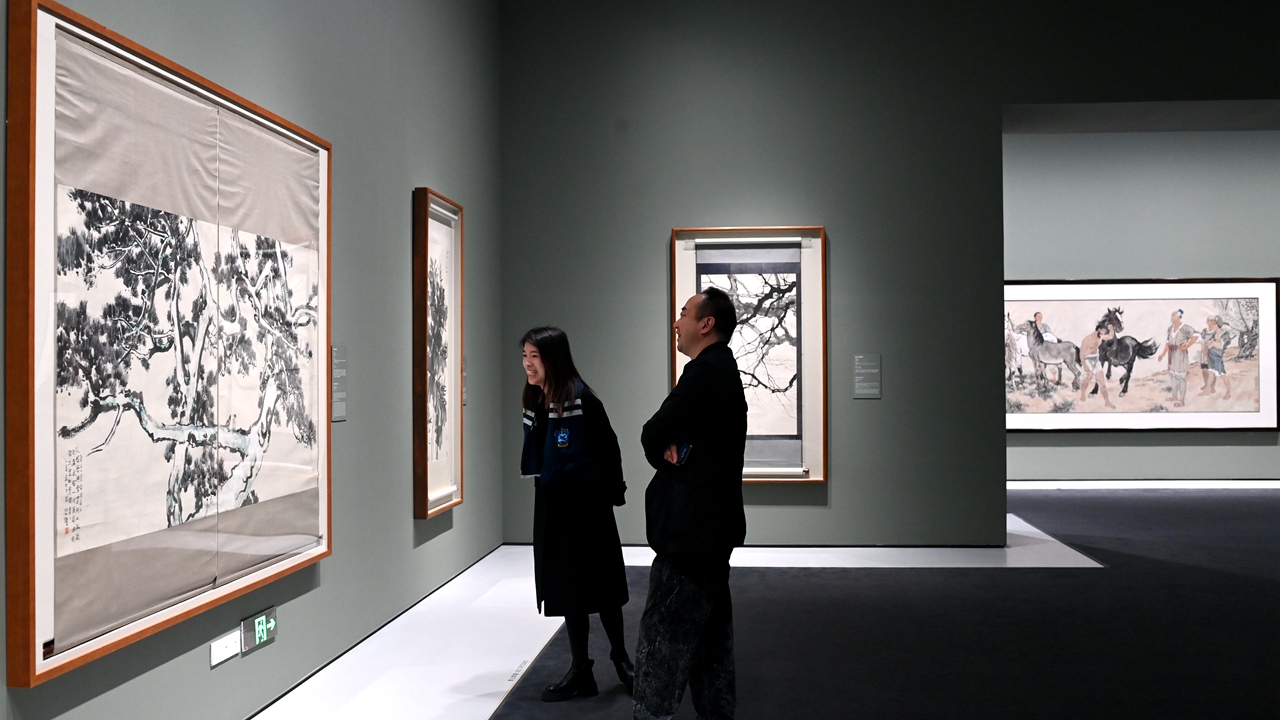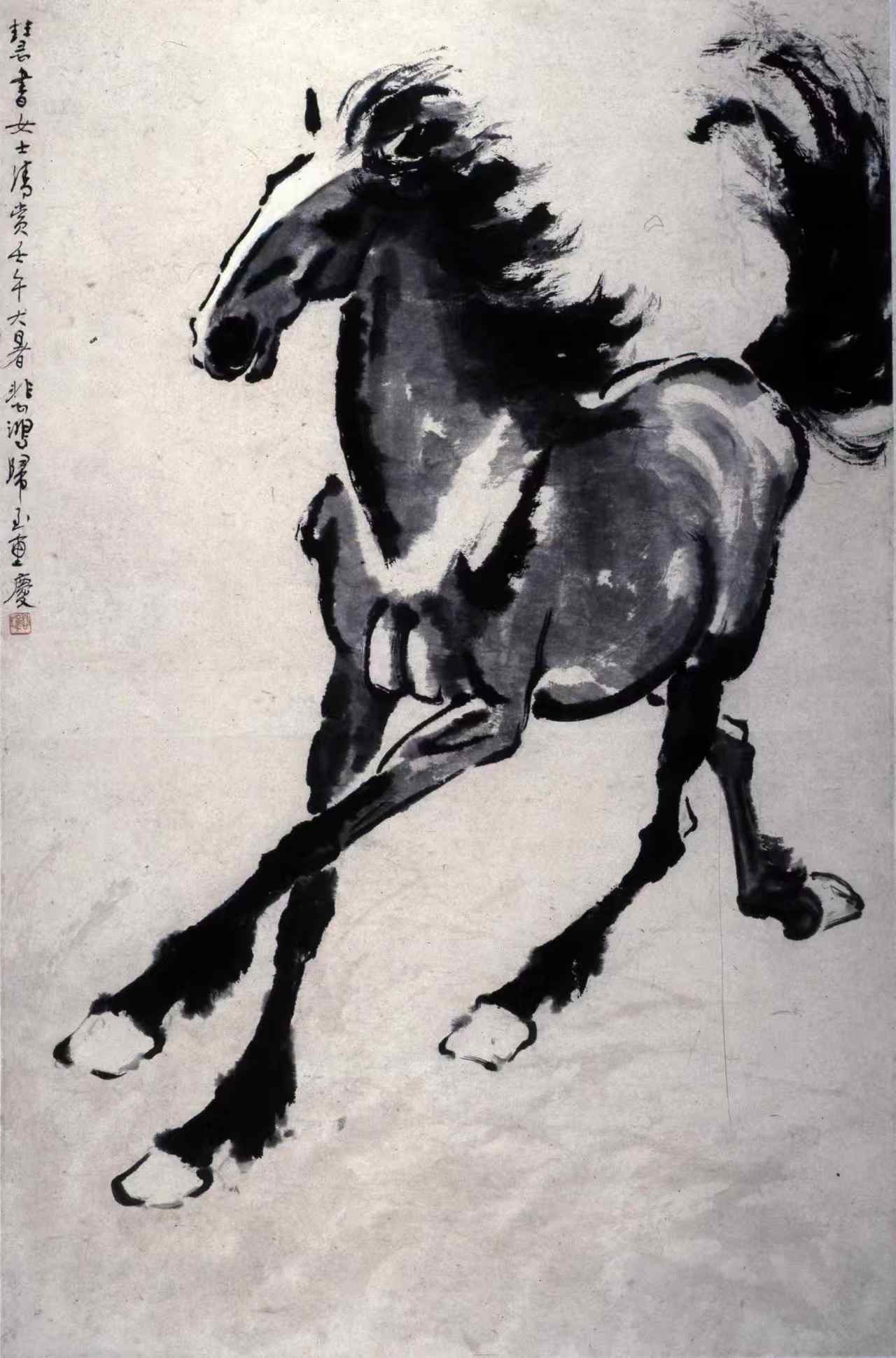Exhibition in GZ celebrates painter's artistic legacy
Writer: Claudia Wei | Editor: Lin Qiuying | From: Shenzhen Daily | Updated: 2025-03-27
An exhibition featuring 73 paintings by one of the greatest contemporary Chinese artists, Xu Beihong, is currently on display at the new division of the Guangdong Museum of Art in Bai’etan, Guangzhou. This exhibition commemorates the 130th anniversary of the renowned painter’s birth.
Xu, widely celebrated for his masterful horse paintings, played a pivotal role in shaping modern Chinese painting by combining Oriental and Western artistic philosophies, said Wang Shaoqiang, curator of the exhibition and head of Guangdong Museum of Museum, emphasizing Xu’s significant contribution to the fusion of these art forms.
Titled “The Legacy Through Time: Xu Beihong,” the exhibition is the first comprehensive showcase in southern China dedicated to highlighting Xu’s artistic legacy. Wang also noted that the exhibition not only presents Xu’s remarkable achievements but also provides a platform for in-depth research of the essence of Xu’s artistic endeavors.

Visitors admire Xu Beihong’s paintings at the exhibition. China News Service
The exhibition is organized into three halls, each representing different periods of Xu’s artistic life. Hall 1 focuses on animal sketches and portraits created by Xu from 1895 to 1925, featuring works such as “Lion Roar,” “Slave and Lion,” and “The Sound of the Flute.” During this period, Xu transitioned from his traditional artistic foundations to studying art in Japan and pursuing further education in Paris.
“Lion Roar” is a sketch Xu created at the Berlin Zoo during his time in Germany. The sketch captures the intense dynamism of a roaring lion, its body facing the viewer while its head turns to let out a powerful roar.
“The Sound of the Flute” is a portrait created during Xu’s studies in France. This oil painting, crafted in 1926, features the painter’s first wife, Jiang Biwei, who accompanied him to France to study art, playing the flute against the tranquil backdrop of a farm.
The Chinese paintings “The Foolish Old Man Moves Mountains” and “Jiu Fang Gao” are highlights in Hall 2.
Xu completed “The Foolish Old Man Moves Mountains” in July 1940 during his art exhibition in India, organized at the invitation of the great Indian writer Rabindranath Tagore. The painting depicts a powerful scene of people led by an old man who is cutting through mountains and chiseling rocks, showcasing Xu’s vigorous brushwork.
“Jiufang Gao,” created in 1931, draws inspiration from the Chinese story of Jiufang Gao, a wise man from the Spring and Autumn Period (770-476 B.C.) who helped Qin Mugong, the ninth ruler of the Qin State, select a pedigreed horse.

“Galloping Horse” by Xu Beihong. File photo
As visitors move to Hall 3, they will encounter Xu’s classic painting “Galloping Horse.” In this iconic artwork, a horse is depicted with all four hooves off the ground and an extended tail, embodying the spirit of uprightness and untamed freedom. The artist skillfully employs rich and vivid ink tones to outline the horse’s head, neck, chest, and legs.
Dates: Until June 15
Venue: Halls 1-3, 1/F, Guangdong Museum of Art (Bai’etan), Liwan District, Guangzhou